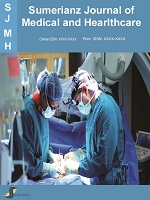Sumerianz Journal of Medical and Healthcare

Online ISSN: 2663-421X
Print ISSN: 2706-8404
Quarterly Published (4 Issues Per Year)
Journal Website: https://www.sumerianz.com/?ic=journal-home&journal=31Archive
Volume 3 Issue 7 (2020)
Successful Haplo – Haematopoietic Stem Cell Transplantation for Children with Sickle Cell Disease in a Low Resource Country Nigeria
Authors : Bazuaye G. N. ; Nwagu M. U. ; Isreal-Aina Y. T. ; Ogunlere B. ; Omonlumhen J. O. ; Ojiemhangbe I. N. ; Akpabio U. E. ; Iyamah X. ; Bazuaye K. N.
Abstract:Background: Sickle cell disease is a chronic debilitating disease despite improved clinical management and improved survival. Stem cell transplantation and genetic engineering remains the only cure for the disease. Despite documented successful allogeneic HSCT in Nigeria, the paucity of full matched sibling donors have become a major challenge worldwide. We have successfully commenced Haplo HSCT in Nigeria making donors readily available for HSCT. Methods: Two children with ages 6 and 4years diagnosed with Sickle cell disease had their mothers as donors with HLA 5/10 matched .They had pre-transplant antimalarial, red cell exchange, anti-Helminthic and post- transplant day +7 Rituxamab for positive EBV . Conditioning regimen was with Fludarabin/Dexamethazone days -68 to -64 and days -40 to -36. Antithymocyte globulin(ATG) days -12 to -10, Fludarabin days -8 to -3 and Busulphan days -8 to -5. Both had post transplant Cyclosphosphamide on days +3 and +4.Immune suppression was with Tarcolimus and Mycophynolate mefortil. Results: Neutrophil engraftment for patient 1 and 2 were on days +18 and 17 respectively while for platelets it was day + 21 for both. Patients had 100% Chimerism on day +30 and were discharged on days + 38 and +42 respectively. Discharge parameters for first patient MP was total white cell count 3800/ ul, platelets 124,000 /ul and haemoglobin 10.8 g/dl while for the second patient UM the total white cell count was 3200 /ul, platelets 97,000 ul and haemoglobin 11.5 g/dl. Both patients are on follow up, immune suppression and are clinically stable. Conclusions: Stem cell transplantation remains a major therapeutic option for the cure of SCD. Successful haplo transplant in a private public collaboration in low resource countries will make HSCT readily available for patients who hitherto do not have sibling matched donors.



